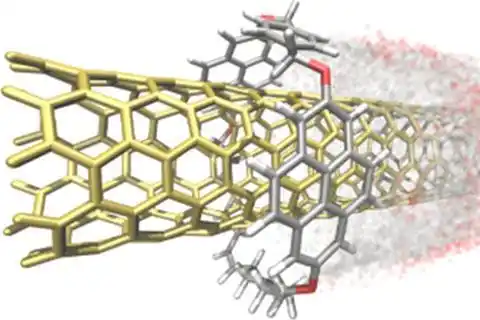افشین رشید
اُستادیار ؛ عضو هیات علمی دانشگاه آزاد اسلامی واحد علوم و تحقیقات تهران
615 یادداشت منتشر شدهAttenuation of Electron Transfer and Presence of Dispersant Role When Dispersing Multi-walled Carbon Nanotubes (CNTs)

Note: CNTs in some samples contain many impurities, such as graphene polyhedral particles, amorphous carbon, and catalyst particles. The optical absorption of these impurities is related to the spectrum and is necessary for quantitative evaluation of the background absorption, which is not possible in this case and quantitative analysis will be accompanied by errors . The third problem is caused by the presence of dispersant, which is dispersed when dispersing CNTs, and its presence causes confusion in the quantitative determination of the amount of SWCNT in the state.
When functional groups are covalently attached to CNTs, the absorption peaks are significantly weakened or even disappear because the nanotube structure changes from some hexagonal SP2 structures to parts of the SP3 structure . NIR-VIS-UV absorption spectroscopy has two important applications: the extent of covalent reactions and selectivity towards different nanosheets. Non-covalent doping or molecular adsorption provides valence electrons (P-doping ) or conduction band saturation (n-doping).

These non-covalent interactions can affect the intensity of the absorption peaks . When doped, electron donors such as (Cs, K) or electron acceptors (-Br2 ) produce very similar changes in the NIR-vis-UV spectrum , both of which attenuate electron transfer. Absorption spectroscopy is used to estimate the abundance of metallic and semiconductor species by comparing the intensities of the corresponding peaks, since the position of these resonance peaks depends on chirality and diameter. For qualitative analysis, absorption spectroscopy is excellent because it shows the overall composition of the sample; however, quantitative evaluation depends on (m, n) for several possible reasons .

The ratio of extinction coefficients for metallic to semiconductor SWCNTs has been reported to be 0.352+, which should be independent of the separation method or starting materials. However, the values of extinction coefficients of SWCNTs reported in the literature are inconsistent and better measurement methods are still needed to determine the extinction coefficients of different (m,n) nanotubes. Secondly, the strong π absorption in the short wavelength region causes the resonant transitions to be indistinguishable. In addition, the complexity of peak overlap is problematic. As a result, the presence of a large number of SWCNTs with different (m,n) of unknown abundance, together with various errors associated with data analysis, makes it difficult to quantitatively assess the concentration of a specific (m,n) species in the sample, and only approximate data are obtained.
Conclusion :
Multiwalled carbon nanotubes (CNTs) in some samples contain many impurities, such as graphene polyhedral particles, amorphous carbon, and catalyst particles. The optical absorption of these impurities is related to the spectrum and is necessary for quantitative evaluation of background absorption , which is not possible in this case and quantitative analysis will be accompanied by errors. The third problem is caused by the presence of dispersant, which is dispersed when dispersing multiwalled carbon nanotubes (CNTs), and its presence causes confusion in the quantitative determination of the amount of SWCNT in the state.
Communication Between The Power Supply System and The Physical Communication Platform Between Different Parts of a Nano System and Nano Antennas (Rectenna)
Investigation of a focused nano-plasmonic diaphragm method with nano-electric field distribution in an entangled diaphragm structure in an aluminum film at a wavelength of less than ۲ nm